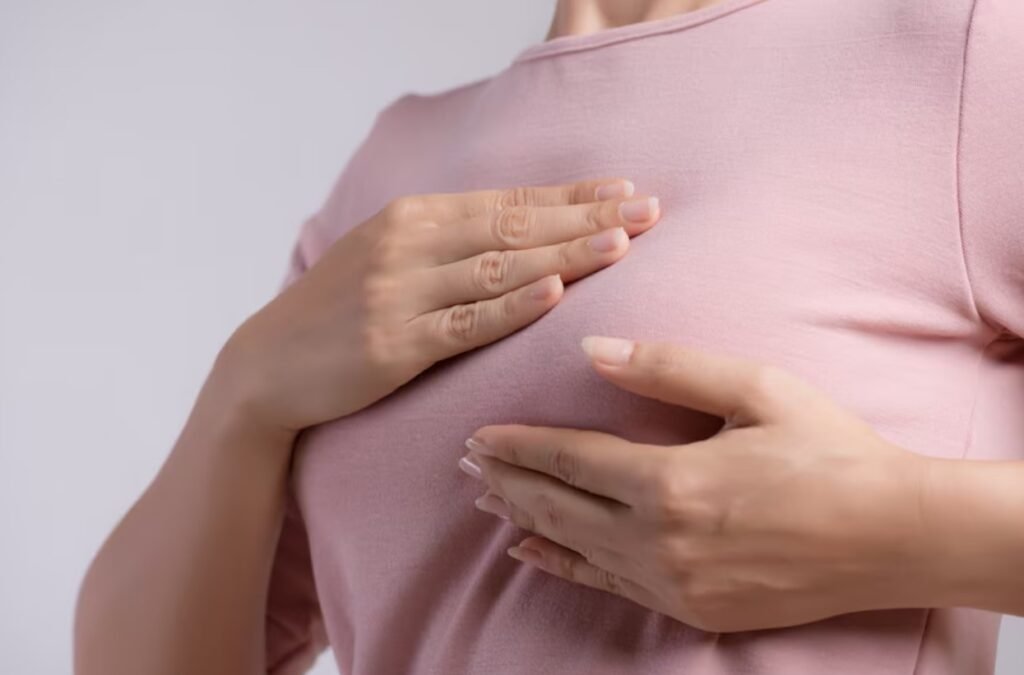Over 270,000 new cases of breast cancer are diagnosed each year in the United States alone, making it crucial to be aware of the early signs and symptoms of this potentially life-threatening disease. If you notice a new lump in your breast or armpit, thickening or swelling in a certain area, or any changes in the skin or nipple, it’s important to schedule a visit with your healthcare provider. Pay attention to any pain, discharge, or abnormalities in size or shape, as early detection can significantly improve treatment outcomes. Here are some key signs to watch out for in order to prioritize your breast health.
Key Takeaways:
- New lump in the breast or underarm can be an early sign of breast cancer.
- Thickening or swelling of part of the breast should not be ignored and should be checked by a healthcare professional.
- Irritation or dimpling of breast skin, along with redness or flaky skin in the nipple area, could indicate a potential issue.
- Pain in any area of the breast, pulling in of the nipple, or nipple discharge other than breast milk, including blood, are all signs that need to be investigated further.
- Any change in the size or shape of the breast should be closely monitored and discussed with a doctor.

Signs and Symptoms of Breast Cancer
New lump in the breast or underarm
Your breast cancer journey may start with the discovery of a lump in your breast or underarm. If you notice a new lump, it is vital to get it checked by a healthcare professional as soon as possible.
Thickening or swelling of the breast
On top of feeling for lumps, pay attention to any thickening or swelling of your breast tissue. Changes in breast texture could indicate an underlying issue, so be vigilant in monitoring any alterations in your breast appearance.
Irritation or dimpling of breast skin
Skin changes in the breast area, such as irritation or dimpling, should not be ignored. Be mindful of any redness, unusual texture, or dimpling on your breast skin, as these could be early signs of breast cancer. Make sure to have any concerning changes assessed promptly by a healthcare professional.
Redness or flaky skin in the nipple area
Cancer symptoms can manifest in various ways, including redness or flaky skin in the nipple area. If you experience these changes, it is imperative to have them evaluated by a healthcare provider to rule out any serious concerns.
Pulling in of the nipple or pain in the nipple area
Breast cancer can also present with symptoms like pulling in of the nipple or pain in the nipple area. If you experience these discomforts, it is vital to have them assessed by a healthcare professional for proper diagnosis and treatment.
Nipple discharge other than breast milk
Redness or discharge from the nipple, other than breast milk, could be a sign of breast cancer. It is crucial to consult a healthcare provider if you experience this symptom to determine the underlying cause and receive appropriate medical care.
Changes in size or shape of the breast
Changes in the size or shape of your breast can be a sign of breast cancer. Keep an eye out for any alterations in your breast appearance and consult a healthcare professional if you notice any unusual changes to ensure proper evaluation and care.
Pain in the breast
The presence of persistent pain in your breast should not be disregarded and should prompt you to seek medical attention. While not all breast pain indicates cancer, it is important to have any ongoing discomfort evaluated by a healthcare professional for proper assessment and management.
Summing up
It is crucial to be aware of the early signs of breast cancer and to regularly monitor your breast health. Bear in mind, if you notice any changes such as a new lump, thickening, irritation, redness, or nipple discharge, it is important to consult with your healthcare provider. Detecting breast cancer early can significantly improve your chances of successful treatment and recovery. Stay vigilant, know your body, and prioritize your breast health.
FAQ
Q: What are some early signs of breast cancer to watch out for?
A: Some early signs of breast cancer include new lumps in the breast or underarm, thickening or swelling of part of the breast, irritation or dimpling of breast skin, redness or flaky skin in the nipple area or the breast, pulling in of the nipple, pain in the nipple area, nipple discharge other than breast milk (including blood), any change in the size or shape of the breast, and pain in any area of the breast.
Q: How important is it to notice and report any changes in the breasts?
A: It is crucial to pay attention to any changes in your breasts and report them to a healthcare provider promptly. Early detection of breast cancer can significantly improve the chances of successful treatment and a positive outcome.
Q: What should I do if I notice any of these early signs of breast cancer?
A: If you notice any of the early signs of breast cancer, it is important to see your healthcare provider for a clinical breast exam and possibly additional tests such as mammograms or ultrasounds. Do not hesitate to seek medical attention if you have concerns about changes in your breasts.
